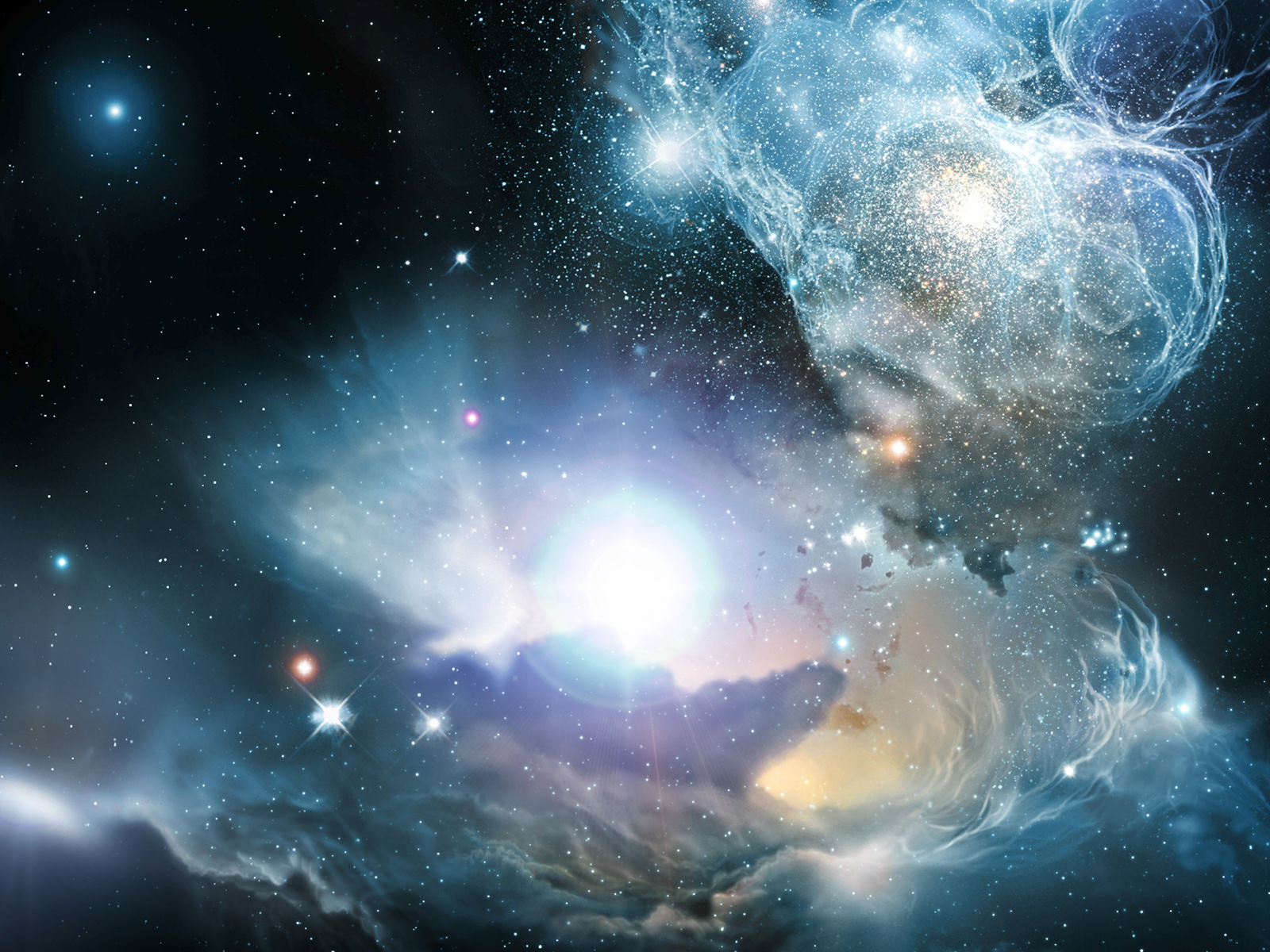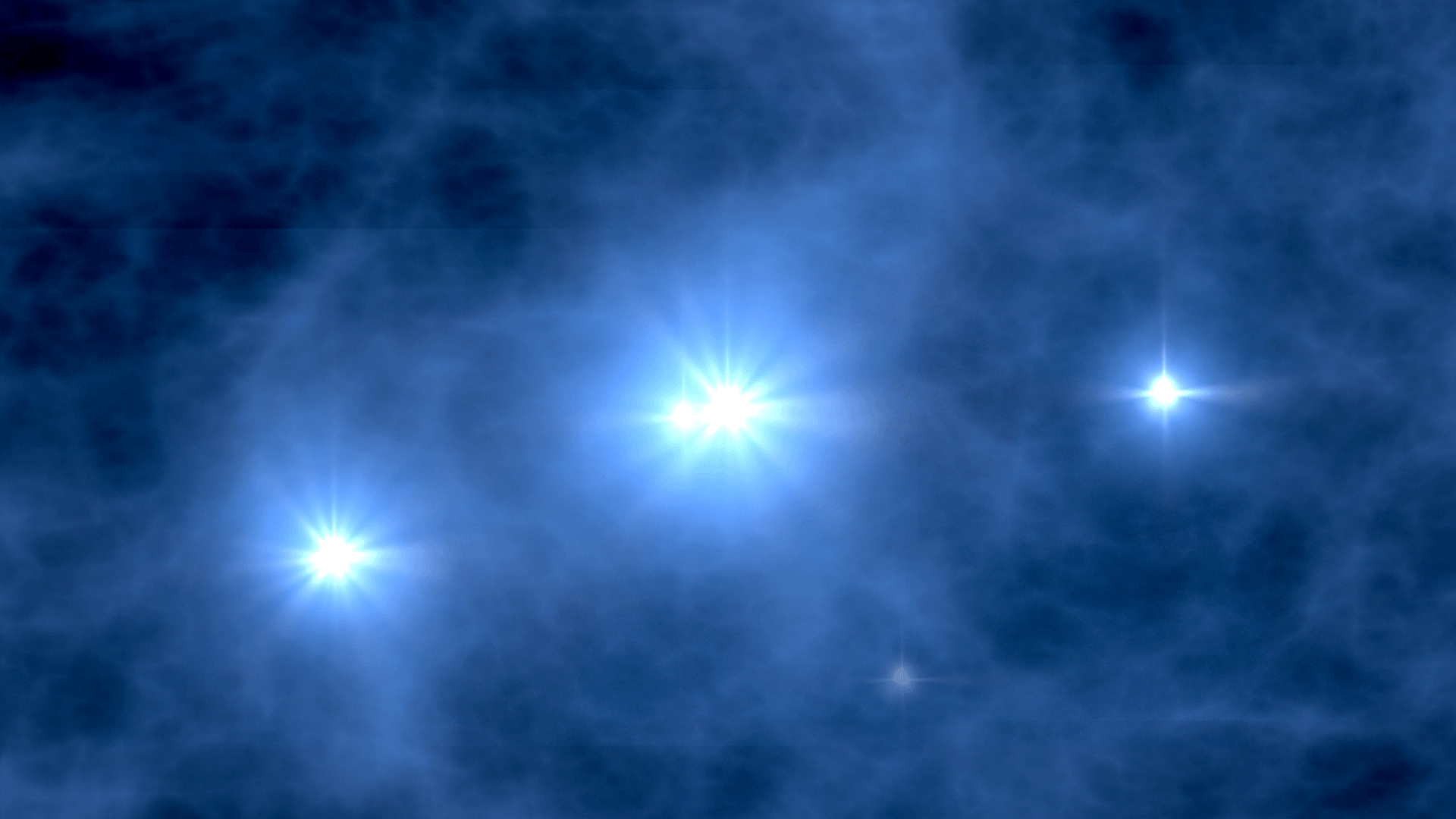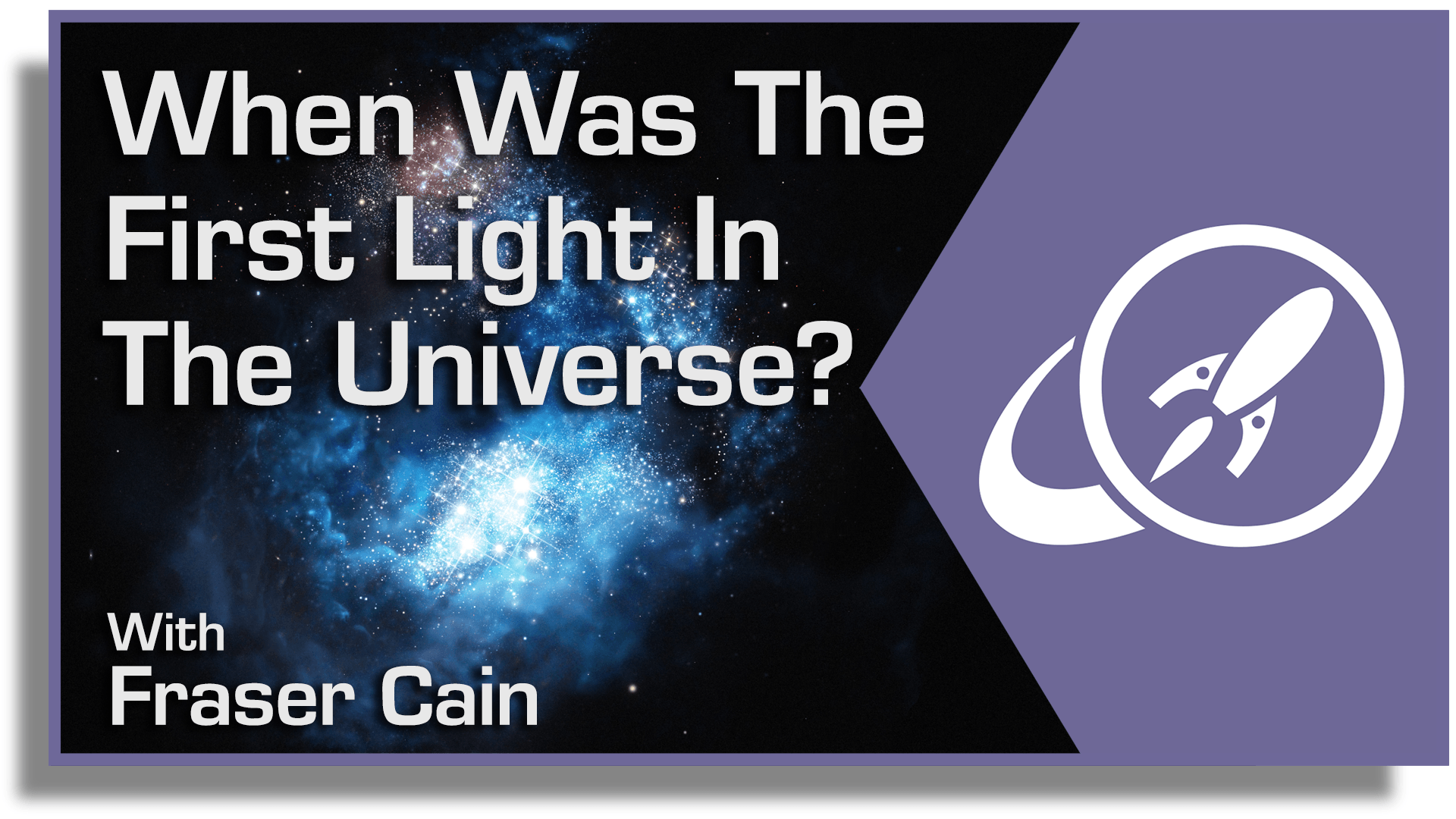Observing the earliest stars is one of the holy Grails of astronomy. Now, a team at the University of Hong Kong led by astronomer Jane Lixin Dai is proposing a new method for detecting them. If it works, the approach promises to open a window on the origin of the cosmos itself.
Continue reading “A New Way to Search for the First Stars in the Universe”Ancient Stars Could Make Elements With More Than 260 Nucleons

The first stars of the Universe were monstrous beasts. Comprised only of hydrogen and helium, they could be 300 times more massive than the Sun. Within them, the first of the heavier elements were formed, then cast off into the cosmos at the end of their short lives. They were the seeds of all the stars and planets we see today. A new study suggests these ancient progenitors created more than just the natural elements.
Continue reading “Ancient Stars Could Make Elements With More Than 260 Nucleons”Next-Generation Gravitational Wave Observatories Could Detect the First Stars When They Exploded as Supernovae
The first stars to appear in the universe are no longer with us – they died long ago. But when they died they released torrents of gravitational waves, which might still be detectable as a faint hum in the background vibrations of the cosmos.
Continue reading “Next-Generation Gravitational Wave Observatories Could Detect the First Stars When They Exploded as Supernovae”Are the Burned-Out Remnants of the First Stars all Around us?
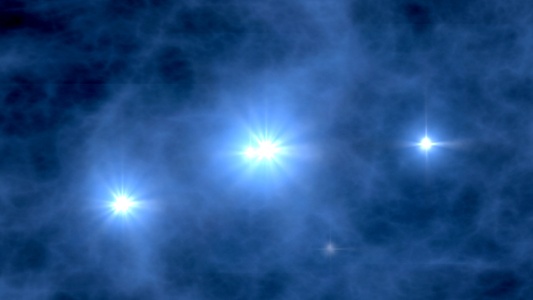
The first stars to appear in the universe lived fast and died young. Today, none of them likely remain. But their remnants, the black holes and neutron stars, might still wander around the cosmos. Unfortunately, they’re extremely difficult to detect unless they merge, and according to new research the only way to see them would be to conduct an unprecedented survey of the local volume of the universe.
Continue reading “Are the Burned-Out Remnants of the First Stars all Around us?”An Extreme Simulation of the Universe’s First Stars
For astronomers, astrophysicists, and cosmologists, the ability to spot the first stars that formed in our Universe has always been just beyond reach. On the one hand, there are the limits of our current telescopes and observatories, which can only see so far. The farthest object ever observed was MACS 1149-JD, a galaxy located 13.2 billion light-years from Earth that was spotted in the Hubble eXtreme Deep Field (XDF) image.
On the other, up until about 1 billion years after the Big Bang, the Universe was experiencing what cosmologists refer to as the “Dark Ages” when the Universe was filled with gas clouds that obscured visible and infrared light. Luckily, a team of researchers from Georgia Tech’s Center for Relativistic Astrophysics recently conducted simulations that show what the formation of the first stars looked like.
Continue reading “An Extreme Simulation of the Universe’s First Stars”The First Stars Formed Very Quickly
Ever since astronomers realized that the Universe is in a constant state of expansion and that a massive explosion likely started it all 13.8 billion years ago (the Big Bang), there have been unresolved questions about when and how the first stars formed. Based on data gathered by NASA’s Wilkinson Microwave Anisotropy Probe (WMAP) and similar missions, this is believed to have happened about 100 million years after the Big Bang.
Much of the details of how this complex process worked have remained a mystery. However, new evidence gathered by a team led by researchers from the Max Planck Institute for Astronomy indicates that the first stars must have formed rather quickly. Using data from the Magellan Telescopes at Las Campanas Observatory, the team observed a cloud of gas where star formation was taking place just 850 million years after the Big Bang.
Continue reading “The First Stars Formed Very Quickly”We May Soon Be Able To See the First, Supergiant Stars in the Universe

We need to talk about the dark ages. No, not those dark ages after the fall of the western Roman Empire. The cosmological dark ages. The time in our universe, billions of years ago, before the formation of the first stars. And we need to talk about the cosmic dawn: the birth of those first stars, a tumultuous epoch that completely reshaped the face the cosmos into its modern form.
Those first stars may have been completely unlike anything we see in the present universe. And we may, if we’re lucky, be on the cusp of seeing them for the first time.
Continue reading “We May Soon Be Able To See the First, Supergiant Stars in the Universe”
When Was the First Light in the Universe?
The speed of light gives us an amazing tool for studying the Universe. Because light only travels a mere 300,000 kilometers per second, when we see distant objects, we’re looking back in time.
You’re not seeing the Sun as it is today, you’re seeing an 8 minute old Sun. You’re seeing 642 year-old Betelgeuse. 2.5 million year-old Andromeda. In fact, you can keep doing this, looking further out, and deeper into time. Since the Universe is expanding today, it was closer in the past.
Run the Universe clock backwards, right to the beginning, and you get to a place that was hotter and denser than it is today. So dense that the entire Universe shortly after the Big Bang was just a soup of protons, neutrons and electrons, with nothing holding them together.
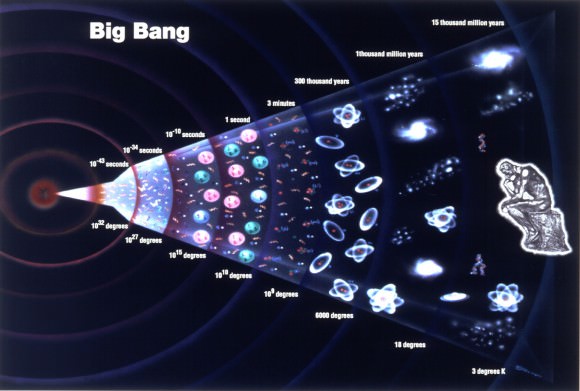
In fact, once it expanded and cooled down a bit, the entire Universe was merely as hot and as dense as the core of a star like our Sun. It was cool enough for ionized atoms of hydrogen to form.
Because the Universe has the conditions of the core of a star, it had the temperature and pressure to actually fuse hydrogen into helium and other heavier elements. Based on the ratio of those elements we see in the Universe today: 74% hydrogen, 25% helium and 1% miscellaneous, we know how long the Universe was in this “whole Universe is a star” condition.
It lasted about 17 minutes. From 3 minutes after the Big Bang until about 20 minutes after the Big Bang. In those few, short moments, clowns gathered all the helium they would ever need to haunt us with a lifetime of balloon animals.
The fusion process generates photons of gamma radiation. In the core of our Sun, these photons bounce from atom to atom, eventually making their way out of the core, through the Sun’s radiative zone, and eventually out into space. This process can take tens of thousands of years. But in the early Universe, there was nowhere for these primordial photons of gamma radiation to go. Everywhere was more hot, dense Universe.
The Universe was continuing to expand, and finally, just a few hundred thousand years after the Big Bang, the Universe was finally cool enough for these atoms of hydrogen and helium to attract free electrons, turning them into neutral atoms.
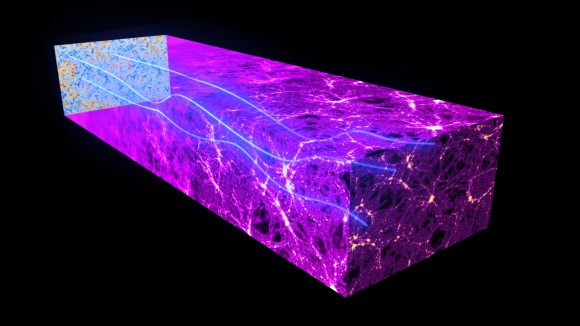
This was the moment of first light in the Universe, between 240,000 and 300,000 years after the Big Bang, known as the Era of Recombination. The first time that photons could rest for a second, attached as electrons to atoms. It was at this point that the Universe went from being totally opaque, to transparent.
And this is the earliest possible light that astronomers can see. Go ahead, say it with me: the Cosmic Microwave Background Radiation. Because the Universe has been expanding over the 13.8 billion years from then until now, the those earliest photons were stretched out, or red-shifted, from ultraviolet and visible light into the microwave end of the spectrum.
If you could see the Universe with microwave eyes, you’d see that first blast of radiation in all directions. The Universe celebrating its existence.
After that first blast of light, everything was dark, there were no stars or galaxies, just enormous amounts of these primordial elements. At the beginning of these dark ages, the temperature of the entire Universe was about 4000 kelvin. Compare that with the 2.7 kelvin we see today. By the end of the dark ages, 150 million years later, the temperature was a more reasonable 60 kelvin.
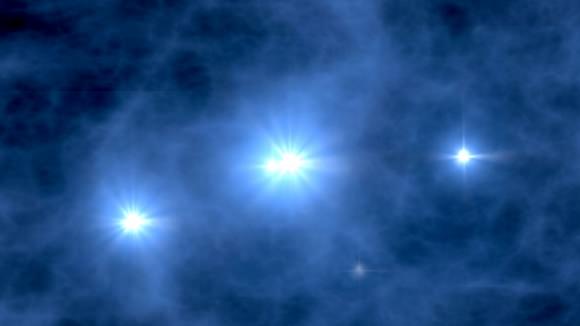
For the next 850 million years or so, these elements came together into monster stars of pure hydrogen and helium. Without heavier elements, they were free to form stars with dozens or even hundreds of times the mass of our own Sun. These are the Population III stars, or the first stars, and we don’t have telescopes powerful enough to see them yet. Astronomers indirectly estimate that those first stars formed about 560 million years after the Big Bang.
Then, those first stars exploded as supernovae, more massive stars formed and they detonated as well. It’s seriously difficult to imagine what that time must have looked like, with stars going off like fireworks. But we know it was so common and so violent that it lit up the whole Universe in an era called reionization. Most of the Universe was hot plasma.
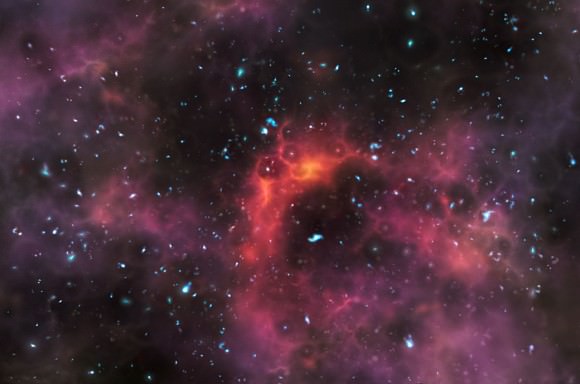
The early Universe was hot and awful, and there weren’t a lot of the heavier elements that life as we know it depends on. Just think about it. You can’t get oxygen without fusion in a star, even multiple generations. Our own Solar System is the result of several generations of supernovae that exploded, seeding our region with heavier and heavier elements.
As I mentioned earlier in the article, the Universe cooled from 4000 kelvin down to 60 kelvin. About 10 million years after the Big Bang, the temperature of the Universe was 100 C, the boiling point of water. And then 7 million years later, it was down to 0 C, the freezing point of water.
This has led astronomers to theorize that for about 7 million years, liquid water was present across the Universe… everywhere. And wherever we find liquid water on Earth, we find life.
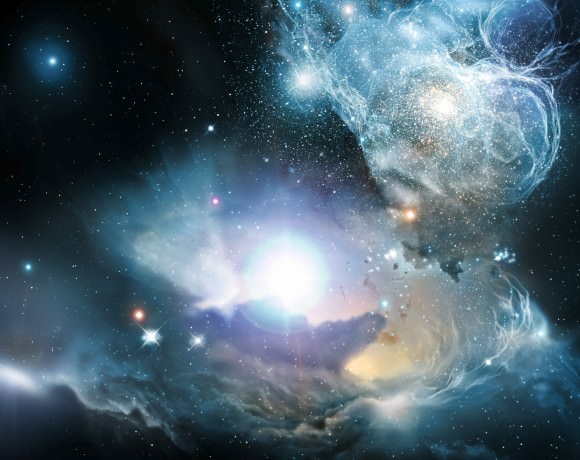
So it’s possible, possible that primitive life could have formed with the Universe was just 10 million years old. The physicist Avi Loeb calls this the habitable Epoch of the Universe. No evidence, but it’s a pretty cool idea to think about.
I always find it absolutely mind bending to think that all around us in every direction is the first light from the Universe. It’s taken 13.8 billion years to reach us, and although we need microwave eyes to actually see it, it’s there, everywhere.
Spitzer Captures Ancient Fireworks of First Objects in the Universe

[/caption]
The Spitzer Space Telescope has looked back in time to see what scientists called the “faint, lumpy glow” given off by the very first objects in the Universe, and these ancient objects obviously provided some early cosmic fireworks. While they are too faint and distant to figure out what the individual objects are – they may be massive stars or voracious black holes – Spitzer has captured what appears to be the collective pattern of their infrared light, revealing these first objects were numerous and furiously burned cosmic fuel.
“These objects would have been tremendously bright,” said Alexander “Sasha” Kashlinsky from the Goddard Space Flight Center, lead author of a new paper appearing in The Astrophysical Journal. “We can’t yet directly rule out mysterious sources for this light that could be coming from our nearby universe, but it is now becoming increasingly likely that we are catching a glimpse of an ancient epoch. Spitzer is laying down a roadmap for NASA’s upcoming James Webb Telescope, which will tell us exactly what and where these first objects were.”
This isn’t the first time astronomers have used Spitzer to search for the very first stars and black holes, and back in 2005 they saw hints of this remote pattern of light, known as the cosmic infrared background, and again with more precision in 2007. Now, Spitzer is in the extended phase of its mission, during which it performs more in-depth studies on specific patches of the sky. Kashlinsky and his colleagues used Spitzer to look at two patches of sky for more than 400 hours each.
The team then carefully subtracted all the known stars and galaxies in the images. Rather than being left with a black, empty patch of sky, they found faint patterns of light with several telltale characteristics of the cosmic infrared background. The lumps in the pattern observed are consistent with the way the very distant objects are thought to be clustered together.
Kashlinsky likens the observations to looking for Fourth of July fireworks in New York City from Los Angeles. First, you would have to remove all the foreground lights between the two cities, as well as the blazing lights of New York City itself. You ultimately would be left with a fuzzy map of how the fireworks are distributed, but they would still be too distant to make out individually.
“We can gather clues from the light of the Universe’s first fireworks,” said Kashlinsky. “This is teaching us that the sources, or the “sparks,” are intensely burning their nuclear fuel.”
The Universe formed roughly 13.7 billion years ago in a fiery, explosive Big Bang. With time, it cooled and, by around 500 million years later, the first stars, galaxies and black holes began to take shape. Astronomers say some of that “first light” might have traveled billions of years to reach the Spitzer Space Telescope. The light would have originated at visible or even ultraviolet wavelengths and then, because of the expansion of the universe, stretched out to the longer, infrared wavelengths observed by Spitzer.
The new study improves on previous observations by measuring this cosmic infrared background out to scales equivalent to two full moons — significantly larger than what was detected before. Imagine trying to find a pattern in the noise in an old-fashioned television set by looking at just a small piece of the screen. It would be hard to know for certain if a suspected pattern was real. By observing a larger section of the screen, you would be able to resolve both small- and large-scale patterns, further confirming your initial suspicion.
Likewise, astronomers using Spitzer have increased the amount of sky examined to obtain more definitive evidence of the cosmic infrared background. The researchers plan to explore more patches of sky in the future to gather more clues hidden in the light of this ancient era.
“This is one of the reasons we are building the James Webb Space Telescope,” said Glenn Wahlgren, Spitzer program scientist at NASA Headquarters in Washington. “Spitzer is giving us tantalizing clues, but James Webb will tell us what really lies at the era where stars first ignited.”
Read the team’s paper.
Source: NASA


